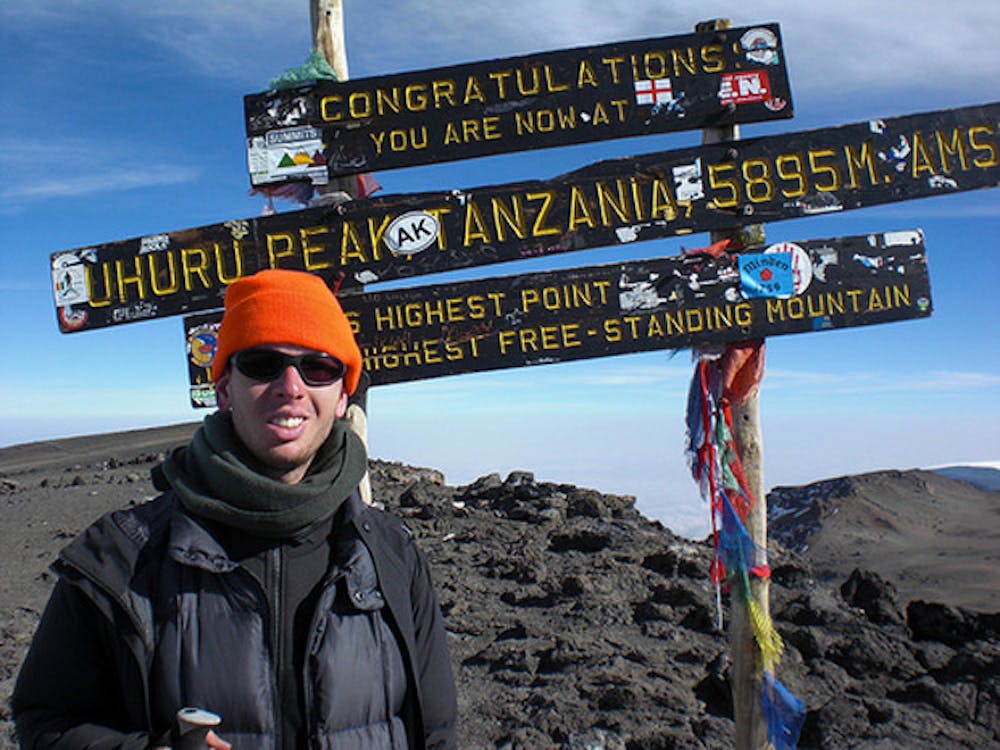For the past year, Tanner Robinson has been training for the climb of a lifetime. Robinson was born blind, and before his yearlong training, he had never hiked before.
The sociology junior has pushed himself up peaks throughout Arizona, including Mt. Humphreys and Camelback Mountain, in preparation to hike Mt. Kilimanjaro, the highest point in Africa.
And on June 23, Robinson did just that.
Robinson said it took the group from the Foundation for Blind Children, eight blind climbers and 17 sighted guides, six days to reach the top of the mountain and a day and a half to get down. And though at times it was difficult, he said he never thought of giving up.
“I never really had a thought of not finishing, just because I had come so far,” Robinson said.
He said the high elevation was by far the hardest obstacle the team had to overcome, as well as dealing with temperatures that dropped to below freezing at night. But despite complications along the way, the positive experiences outweighed the difficulties, Robinson said.
He said bonding with the team of hikers was one of his favorite parts of the trip.
And that teamwork was tested throughout the hike, Robinson said, and one time in particular stands out. He said part of the mountain, called Barranco Wall, was very difficult to maneuver over, but with the help of his teammates, he was successful.
“You’ve just got ledges to work with, so I had two guides on either side of me, on my left and my right, just kind of calling out where to go next because I’d be following along with my hands,” Robinson said. “It was my first chance to experience the mountain in that way.”
And there was another “first” Robinson experienced that he said he will never forget.
One night the team started toward the summit at 2 a.m. and he saw a glimmer off the side of the mountain.
“You’re so high up there — about 16,000 feet when you start out — and you’re literally above the cloud layer,” Robinson said. “And I saw these flickering things in the distance.”
Robinson said he asked the person next to him what the lights were, as he assumed they were headlamps from across the mountain, but his fellow hiker told him they were stars.
“It was really incredible because that was the first time I had every seen a star,” Robinson said. “It was really beautiful to see them flickering.”
And the team of hikers was glad to share experiences like that with Robinson, said Marc Ashton, chief executive officer of the Foundation for Blind Children.
Ashton, a sighted guide on the trip, said reaching the highest point of Mt. Kilimanjaro, Uhuru Peak at 19,340 feet, with the team was “magical.”
“You’re in this state of euphoria where you just can’t believe you finally made it,” Ashton said. “It was a moment of peace.”
Ashton said the group set four world records by reaching the top that includes the largest blind group (eight) to hike Mt. Kilimanjaro, the youngest blind climber (Max Ashton, age 13), first blind veteran (Tom Hicks) and first albino (Adam Messler).
And Ashton said the hikers don’t want to stop here. Though he’s not sure what’s next for the group, he knows Mt. Kilimanjaro is not their final trek.
“It’s a great life lesson, because if you have a common goal, you can achieve anything,” Ashton said, and Robinson agreed.
“As long as you set your mind to it and have the right skills and training, [a person who is blind] can be on the same playing field as a sighted person,” Robinson said.
Reach the reporter at abigail.gilmore@asu.edu




